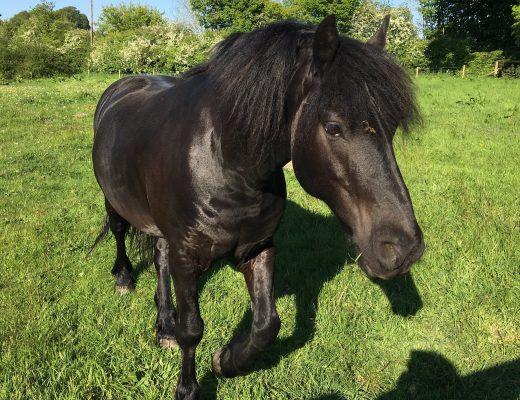That is the question. One to which there is no straight answer. Rugging, like many things, is not a case of one size fits all. Ultimately you need to look at your horse as an individual to determine whether on not they will require a rug at any point and what kind of rug that will be. With that in mind, I thought it would be helpful to share some info about the biology of the horse in relation to heat regulation to help you make the best decision for your horse this winter!
As the weather turns colder, it is very important to remember that horses don’t feel the cold in the same way that we do. Just because you feel the need to throw on an extra layer before heading to the barn, it doesn’t necessarily mean your horse will. While you might think you are being kind by wrapping your horse up against the elements in the thickest rug you could find, it is important to be aware that over-rugging is a serious welfare concern.
Basic Biology
The thermoneutral zone is what we call the range within which horses can easily regulate their body temperature, meaning they will feel cold when the air temperature falls below 0°C (the lower critical temperature) and hot when it rises above 25°C (the upper critical temperature). However, this range changes between summer and winter and horses that are acclimatized to colder weather can have a lower range. In comparison, the lower critical temperature for an unclothed person is around 25°C – this shows just how much better your horse is at coping with the cold than you are!
So what happens when the temperature goes below the thermoneutral zone? In lower temperatures, horses have other methods of keeping the heat in. They will seek shelter from wind and rain and increase their metabolic rate, which essentially means using up more energy. Horses can also reduce heat loss by reducing blood flow to their limbs, which means that their limbs will get colder, so don’t use these as an indicator of your horse’s body temperature. It is better to feel your horse’s neck, withers and body to determine how cold they are. If your horse gets very cold, they will shiver to help stay warm.
Affecting Factors
There are many factors that affect the horse’s body temperature, the most obvious being weather. Convective heat loss is faster when there is a greater difference between the horse’s surface temperature and the air, so colder air temperatures will have a significant impact. Wind and rain also speed up convective heat loss. Different types of horses will also lose heat more easily than others. For example, young and old horses cope worse with the cold (like with most things), often due to having less body fat, and may well require a rug in colder temperatures. Alternatively, horses with a high BCS (body condition score) will be better insulated against cold weather – avoiding rugging these types of horses and even giving a neck and belly clip can actually be a good weight loss method for winter!
Diet also plays an important role in the winter as high fibre diets are linked with greater heat production, as opposed to high starch/oil based diets, but this doesn’t mean you need to increase the energy in your horse’s diet unless temperatures drop below the lower critical temperature. Don’t forget that winter is a good opportunity for your horse to lose those extra kilograms they piled on over the spring and summer, as would naturally occur in the wild.
Over-rugging
So what is the problem with over-rugging? Over-rugging your horse can lead to discomfort and rubbing, especially if the rug is causing your horse to sweat, and even the development of skin conditions. Over-rugging can also cause weight gain as the horse is doesn’t need to use as much energy to keep warm. If rugging your horse, it’s important to consider that rugs prevent sunlight reaching your horses skin (required for making Vitamin D), so you should allow your horse at least some time in the day un-rugged.
I hope you found this helpful for navigating winter with your horse, but don’t forget there is no set rule book when it comes to horses. Pay attention to how your horse feels and looks, as well as taking into consideration their biology as I’ve discussed, and you can’t go far wrong! Any questions or for more information, please get in touch!




No Comments